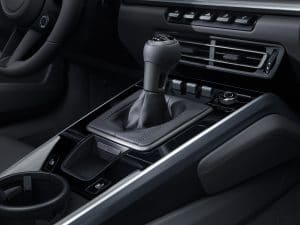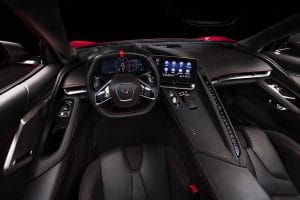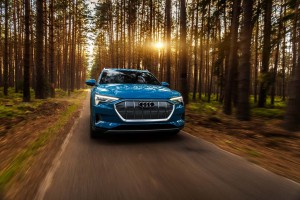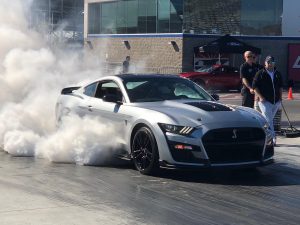
Porsche is running counter to recent trends, adding a manual gearbox option on the 2020 911 Carrera.
For those who like to row their own, there’s some good news. The Porsche 911 Carrera will get an optional manual gearbox for the 2020 model-year. But for members of the Save-the-Manual club that development is offset by a variety of recent setbacks. The number of products that offer manual transmissions is, on the whole, continuing to decline.
That’s one reason why sales are plummeting – so much so that a new report by J.D. Power and Associates reveals that battery-electric vehicles actually outsold products equipped with a stick during the most recent quarter of this year, and the trend is only likely to continue.
The manual transmission “is going away,” said Chris Li, a senior director at JDPA, even as battery-cars finally begin to gain some traction.
(Toyota Set to Reveal Breakthrough in Solid State Batteries)
For the third quarter of 2019, only 1.1% of the vehicles sold in the U.S. were equipped with manual transmissions, down from 1.6% a year prior. By comparison, battery-electric vehicles, or BEVs, generated 1.9% of U.S. new vehicle sales during the third quarter of this year, up from 1.6% between July-September 2018.
Stick shifts were the only option motorists had in the early years, though a primitive automatic gearbox was developed by Boston’s Sturtevant brothers way back in 1904. Something close to the modern automatic didn’t appear until Henry R. Hoffman, a Chicago inventor, applied for a patent for an “Automatic Gear Shift and Speed Control” in November 1921. Even then, serious production didn’t begin until 1934, when both General Motors and REO introduced their own semi-automatic designs.
It was only in the 1950s and 1960s, that American motorists began to shift, as it were, from manual to automatic transmissions, declining prices and greater availability offering key incentives.
By the 1990s, the automatic became the undisputed king, especially as newer designs offering more gears, overdrive and lock-up torque converters inverted the traditional argument for sticking with a manual: improved performance and fuel economy.
When Porsche launched an all-new version of the 911 early this decade, it shocked fans by noting that not only did its first-of-the-kind seven-speed manual get lower mileage than the sports car’s automatic transmission but it also was a couple tenths of a second slower 0-to-60.
(Senate May Push $426B EV Incentive Package if Dems Regain Control)
That helps explain why a number of exotic performance brands, such as Ferrari, have all but abandoned manual transmissions – though, in some cases, they’re opting for a sort of hybrid, the double-clutch transmission, or DCT, essentially nothing more than an electronically shifted manual.
The 2020 model-year delivered a double blow to performance fans opting for a manual option. Chevrolet, for one, announced it would opt solely for an eight-speed DCT on the eighth-generation Corvette. Tadge Juechter, the “C8” chief engineer told TheDetroitBureau.com that there were a number of reasons, including the complexity of the mid-engine car’s design, the small driver footwell where a clutch pedal would need to go, and the simple fact that it wouldn’t be as fast.
That latter factor influenced Ford’s decision to go with an all-new Tremec seven-speed double-clutch gearbox for the 2020 Mustang Shelby GT500. The DCT can handle shifts in as little as 80 milliseconds – “Less than the time it takes to get a clutch pedal fully depressed,” explained Mustang Chief Engineer Carl Widmer.
Curiously, Ford has decided to install a seven-speed manual transmission in the Mustang Lithium, a concept car it revealed this week at the SEMA Show in Las Vegas, Developed in partnership with supplier Webasto, it’s an all-electric take on the classic Mustang coupe that punches out 900 horsepower and 1,000 pound-feet of torque.
(Click Here to check out the all-electric Mustang Lithium concept at SEMA)
What’s particularly curious about the show car is that only one other new, long-range BEV is using a multi-speed transmission of any form, the Porsche Taycan going with a two-speed box on one axle. Every other production BEV relies on a single-speed transmission.
As for demand for electric vehicles, JDPA’s Li says they may now be outselling cars with gas engines and manual transmissions, but their adoption rate isn’t much faster than the initially slow uptake of automatic transmissions.
“EVs are still stuttering” in the marketplace, Li said, and likely won’t gain wide acceptance until manufacturers can resolve a variety of challenges, including price and range, and ensure there’s an acceptable public charging network in place.




More EVs and std trans cars? So what. What is the point. Fish no longer need bicycles. Big deal.
Dinosaurs defend top dog position in a world drivers do the driving while smoking ’em and crunching is music to gearhead’s ears, unaware that evolution persists despite asteroids.